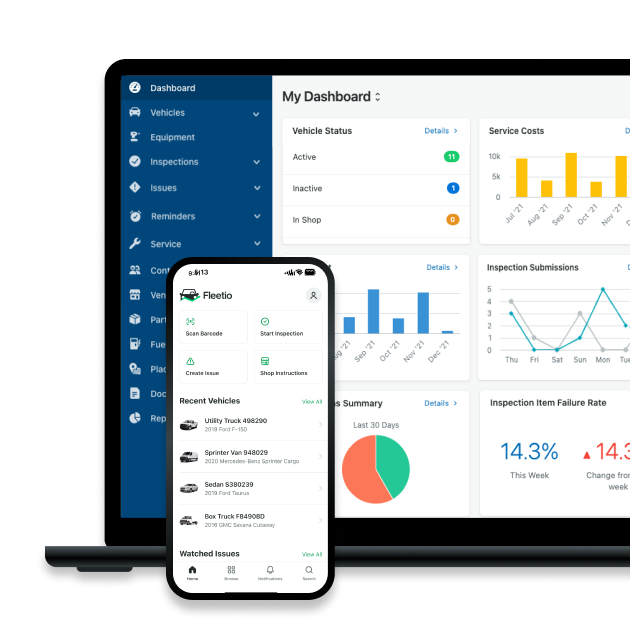11 things to consider in driver assignment and scheduling
1. Driver Availability and Preferences
It’s important (and considerate) to take into account driver availability, preferences, and contractual agreements when looking at assignments and scheduling in your driver management system. Many drivers specify working hours, days off or preferred routes, and balancing these factors when creating driver schedules helps to maintain driver morale and work-life balance.
2. Workload Distribution
Ensuring workload is evenly spaced among drivers is essential to prevent both overburdening and underutilizing. Equitable distribution of tasks, as well as prioritizing each driver's skill set and capacity, can benefit both driver satisfaction and management flow.
3. Route Optimization
Efficient routes not only save time and fuel but also reduce driver fatigue in the long run, and a good scheduling software that can integrate data like traffic patterns, delivery windows and vehicle capacities can go a long way in smoothing out your operations.
4. Traffic and Weather Conditions
Real-time traffic and weather conditions can greatly impact delivery times and driver safety. Incorporating live traffic updates and weather forecasts into scheduling decisions helps fleet managers adjust assignments accordingly.
5. Customer Priority and Expectations
Individual customers might have varying priorities and expectations for delivery times or project completion, and fleet managers should focus on making sure that high-priority customers are serviced on time, as well as setting expectations that can be effectively managed throughout each project or engagement.
6. Compliance and Regulations
Adhering to labor laws, regulations and driving hour limits is of utmost importance to staying compliant and operational, and it can have a big impact on your industry reputation. Ensure that all driver assignments align with legal requirements to prevent violations and penalties, as well as bad word-of-mouth reports among drivers.
7. Vehicle Conditions
Driving vehicles that are in good condition is a deciding factor in how a driver’s workday will go. Fleet managers should stay aware of vehicle maintenance schedules and assign drivers to well-maintained vehicles to prevent breakdowns.
8. Communication and Updates
Clear communication is crucial to a smooth fleet operation, so fleet managers should have communications systems that allow them to relay any changes in assignments or schedules as expediently as possible.
9. Emergency Procedures
Every fleet should have a contingency plan in place for unexpected situations like vehicle breakdowns, traffic accidents or sudden changes. Fleet managers should have a prioritization system that allows them to easily reassign tasks and vehicles or provide assistance in emergencies.
10. Performance Tracking and Training
Regularly communicating with drivers about performance by tracking their behavior with telematics (as well as seeking their feedback) can lead to improvements in scheduling. Fleet managers should also consider offering ongoing training to drivers to enhance their skills and broaden their capabilities, which can mean more versatile driver assignments in the future.
11. Driver Assignment and Scheduling Software
Having a way to digitally manage scheduling and assigning drivers can be a gamechanger in your fleet’s productivity and efficiency – it allows fleet managers to remotely manage all aspects of their fleet alongside their driver information, with immediate insights into the efficiency of your distribution of assets and drivers.
Streamline drivers assignments and scheduling in Fleetio
Track scheduled driver assignments in real time to improve accountability and surface unused assets.
Tell me moreRecommendations for managing driver assignments and scheduling with software
1. Centralized Management and Real-time Tracking
Scheduling and assignment software can be a great way to centralize fleet management data and processes in one place. Managing assignments through spreadsheets and paper schedules can get a little cluttered and overwhelming, but modern software solutions offer a one-stop platform where fleet managers can oversee all fleet-related activities in real time, including driver assignments and scheduling. That means fleets have consistent access to accurate information about vehicle locations, driver assignments, and task statuses at any given moment.
Recommendation
Choose software that offers full-scale maintenance tracking, GPS and telematics integrations and real-time updates. This ensures that you have complete visibility into your fleet’s activities, allowing you to make informed decisions promptly.
2. Simplified Scheduling
Manual scheduling can be time-consuming and error-prone, but scheduling software can streamline the process by taking into account factors like vehicle availability, driver shifts, traffic conditions and delivery windows. This reduces the risk of conflicts and optimizes routes for fuel efficiency and timely deliveries.
Recommendation
Opt for a platform that provides instant insights into asset availability. This will allow you to consider multiple variables to create efficient schedules based on what’s happening in your fleet in real time, saving time and reducing operational costs.
3. Communication and Collaboration
Clear communication between dispatchers, drivers and customers is essential for smooth fleet operations. Modern scheduling software often comes with built-in communication features, like tagging and push notifications that lets everyone stay in the loop and on the same page.
Recommendation
Prioritize software that offers seamless communication features to enhance coordination and minimizes misunderstandings.
4. Maintenance Scheduling
Maintaining a fleet that’s consistently available and usable requires diligent scheduling of routine maintenance and repairs, and neglecting regular preventive maintenance can lead to costly breakdowns and disruptions. An ideal software solution will have dedicated maintenance scheduling services and be able to immediately alert you when service is due.
Recommendation
Choose software that integrates maintenance scheduling. Keeping your fleet in optimal condition reduces downtime and extends the lifespan of your vehicles.
5. Data-Driven Insights
Data is the most valuable asset in a modern fleet. Fleet management software generates a wealth of data that can be analyzed to identify patterns, optimize processes and make better-informed decisions.
Recommendation
Seek software with robust reporting and analytics capabilities. These insights help you identify bottlenecks, inefficiencies, and areas for improvement within your fleet operations.
Manage everything in Fleetio
Want an integrated platform that can help you manage your drivers and your assets more efficiently?
Schedule your guided tour

